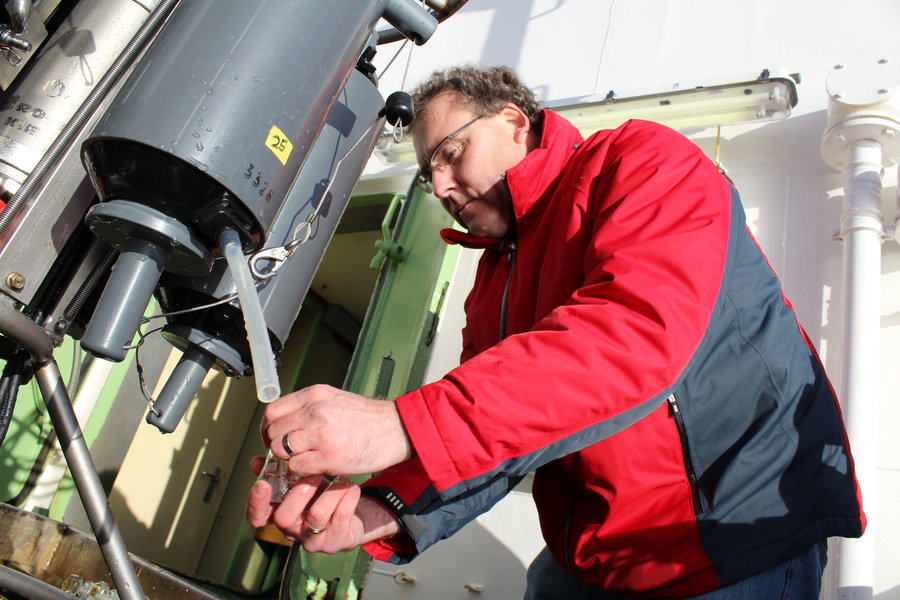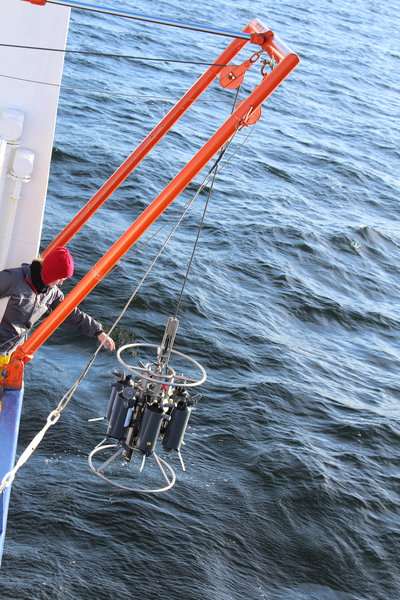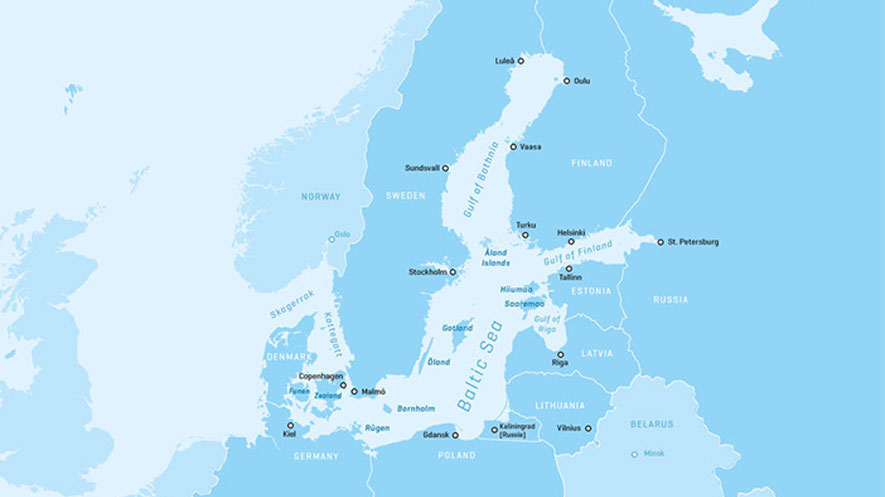At first glance, the Baltic Sea seems to be rather uninteresting for scientists working on global ocean topics: it is comparatively shallow, has a low salinity, and only a very narrow connection to the North Atlantic.
Yet, this impression is deceiving. In the current issue of the international journal Science Advances, 26 authors from 21 scientific institutions in seven countries appeal to the greater scientific community and policymakers to use the Baltic Sea Region as a model for coming changes in the world’s oceans.
 Collection of water samples on RV LITTORINA. Photo: GEOMAR
Collection of water samples on RV LITTORINA. Photo: GEOMAR
"This unique sea of brackish water can serve as a kind of time machine that allows us to better estimate future global changes," says one of the lead authors, Professor Thorsten Reusch from the GEOMAR Helmholtz Center for Ocean Research Kiel.
The scientists argue that the changes expected to occur in our global oceans can already be observed in the Baltic today. "This is because the small volume of water and slow water exchange with the open ocean, behaves like an amplifier, allowing many processes and interactions to occur at a faster pace," explains Dr. Jan Dierking, GEOMAR, who initiated the study together with Professor Reusch.
The oceans have warmed by an average of 0.5°C over the past 30 years. In the same period, time-series measurements in the Baltic Sea have recorded warming of around 1.5°C. Likewise, there are large oxygen-free zones in the deep areas of the Baltic Sea, which have increased tenfold over the past century; and the pH -- a measure of ocean acidification -- of Baltic waters regularly reaches values that are expected in other ocean areas in the next century.
 Water sampler on RV LITTORINA in the Baltic. Photo: GEOMAR
Water sampler on RV LITTORINA in the Baltic. Photo: GEOMAR
On the one hand, these extremes are caused by the particular basin topography of the Baltic Sea. On the other hand, intensive use by humans continues to accelerate negative changes. Nine countries border on the Baltic Sea directly, and all are highly industrialized with densely populated coastal regions. Moreover, intensive agriculture in the interior ensures high nutrient runoff, while equally intensive fisheries put pressure on the pelagic food-web.
But it's not all doom and gloom. The Baltic Sea is one of the best-surveyed seas on Earth. Scientific observation and monitoring of physical and biological processes began around 1900. There is a strong tradition in scientific co-operation among many countries surrounding the Baltic, culminating in the implementation of the European Union’s (EU) joint Baltic Sea research and development program BONUS, a dedicated macro-regional research agenda, and funding scheme that also enabled the present study. These projects provide a sound basis for science-based resource management -- "on a level accomplished in only a few regions of the world," emphasizes Professor Reusch.
Among the many management success stories: the bordering countries have managed to significantly reduce nutrient inputs since the 1980s, reverse the decline of large predators, and curb overfishing. This has been achieved through the binding agreements within the framework of the EU, but also thanks to the ambitious goals of the Baltic Sea Action Plan (BSAP), which included Russia even before the end of the Cold War. The protection of capture fisheries, marine mammals, and bird populations among the perimeter countries have also led to measurable improvements of existing stocks.
"Overfishing, warming, acidification, pollution, eutrophication, loss of oxygen, intensive use of coasts -- all these are phenomena that we observe around the globe. Because they have been particularly drastic in the Baltic, but also because some key problems were successfully addressed, the region can, for good and for bad, tell us what to expect and how to respond to the challenges of the future," Professor Reusch concludes. "The Baltic Sea, as a model region, can contribute to achieving the United Nation's Sustainable Development Goal 14 -- the conservation and sustainable use of the oceans, seas and marine resources."



